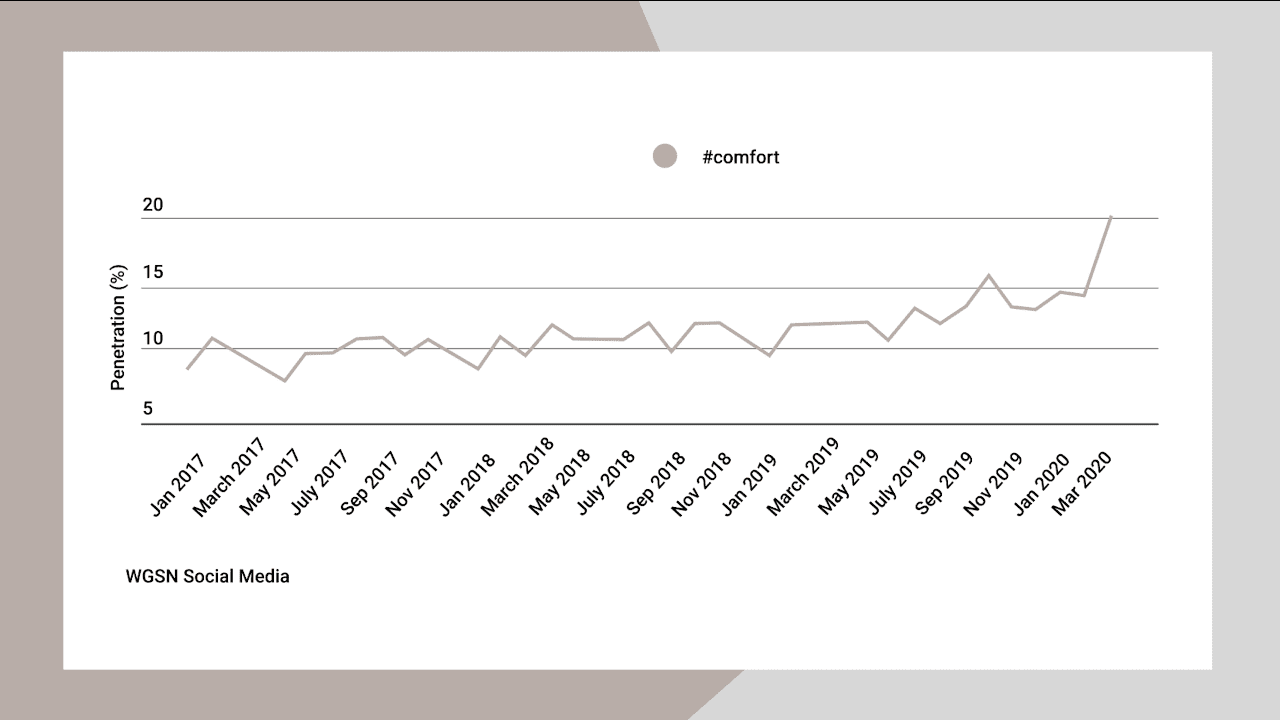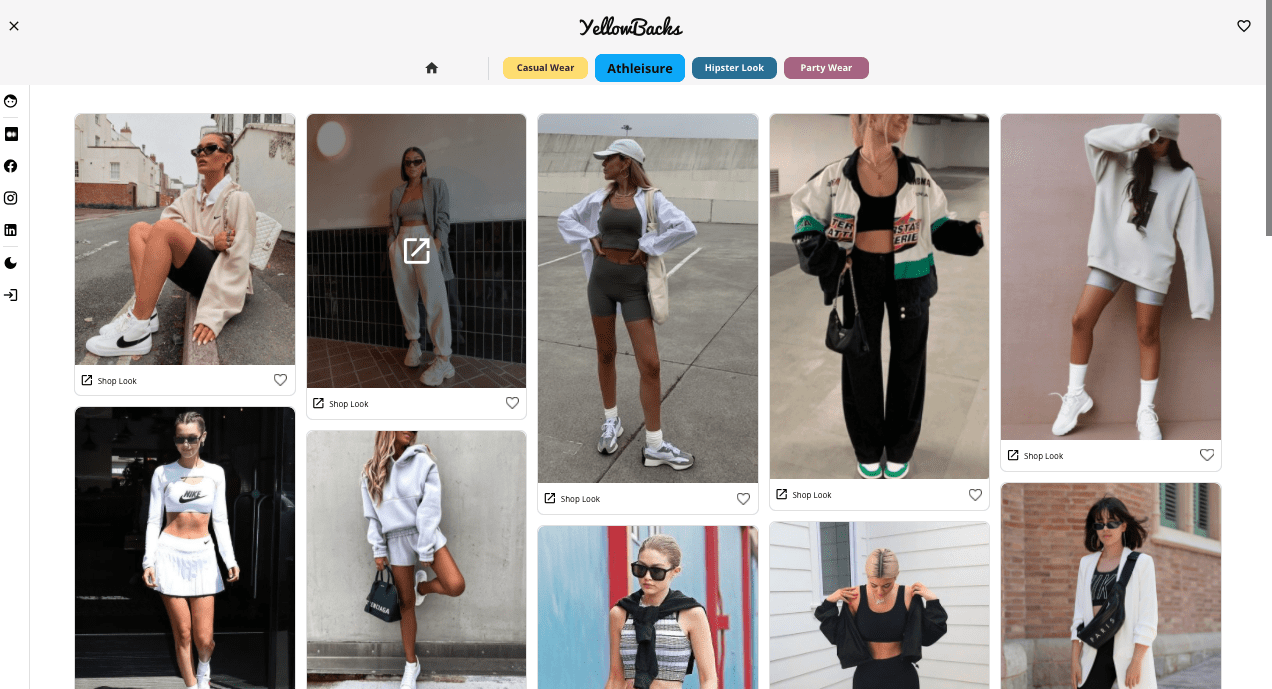SPANDEX NYLON & ACRYLIC MOST ESSENTIAL MATERIALS FOR ATHLEISURE
Trending Looks of Athleisure and 2milewear Are Possible Only Because of Special Performance
Fabrics
We can see Athleasuire which is trending has the best of all the world looks. Things are borrowed from Activewear, Streetwear, Workwear, and Gymwear.
As per the Boston Consulting Group and RAI joint study on the resurgence of Retail in India, it found that Indian consumers are responding to Athleisure very well. A major reason is working from culture, attention to health, and dressing for comfort.

In another report by WGSN, Social media tracker #COMFORT, whereas there is a decline in the total consumption, we see is a significant rise in the requirement of comfort and loungewear clothing. As per the report, items need to be multi-functional. We need more out of our clothes.

WGSN SOCIAL MEDIA TRACKER ON #COMFORT
It seems that the current scenario of work from home is likely to continue for a long time now. We would be getting dressed up in easy-care tops and joggers. Would be going out in 2mile style to grab a cup of coffee with friends or working out just before the 4 pm meeting. All these are possible and happening because of some innovations that happened in the fibers and finishes.
Most of the natural fibers are not easy-care, relatively poor in moisture management, and restrict movement. Here innovative synthetic materials like Nylon, Spandex, and Acrylic can play a great role. OnceOnce adds a lot of value. We can also blend natural and synthetic fibers to get the best of both worlds.
Let’s have a look at attributes of these manmade fabrics which are contributing to make them the choice of material for Athleisure and 2milewear.
Nylon
Nylon ( also known as Polyamides) has some unique properties. It’s coming out as the outcome of research for an alternative to silk. Apart from its durability and easy-care properties, it’s famous for its soft hand feel ( remember its silk alternative). Soon after its commercial launch in 1940 Nylon got instant fame. During that time the Nylon stockings were sold twice the price of Silk stockings.
Its properties like soft hand feel, high resistance to sunlight, high melting point. Also, its easy care, abrasion resistance, and High resistance to mildew, ETC., rot makes it the idealistic choice for Athleisure.
It can blend with cotton, viscose, modal, wool, or any other fiber to add value to the fabric. It has its elasticity but with spandex, you can move it like anything.
Nylon and Nylon blends can be seen in tops, sweatshirts, shorts, track pants, and leggings.

You can follow in these fashion styles from the Athleisure collection on yellowbacks.com
Spandex
Spandex is known by its brand name Lycra by DuPont, again a result of a decade of research for replacing a natural material, Rubber. It’s used initially for the undergarments which are still there, but the association with activewear started in the 1968 winter Olympics. French ski team wore garments made out of Lycra. This became the benchmark of how performance sportswear looks fashionable as well.
It adds to the performance of the garments when it needs flexibility, without compromising on the fit. It will support and ease of movement while you are just working or exercising, from home.
It’s lightweight and can be easily woven or knitted with other yarns. The only drawback is that its reaction to high heat, where its stretchability decreases.
Acrylic
Chemically known by the name of Polyacrylonitrile, Acrylic fabric was the response to another expensive natural material – wool.
It’s quite lightweight and can take all kinds of dyes, including neons. Its soft and fuzzy surface can easily mimic cashmere. Again like most, synthetic fibers Acrylic is also resistant to bacteria, mold, and fungi. Makes it an idealistic functional fabric. It blends with most of the man-made and natural filers to give you a hybrid. The best use of acrylic is making lightweight sweaters and winter wear.
Environmental impact
Being synthetics these materials are not biodegradable easily, so the impact of single-use application burden, the ecosystem. Microplastics are shed every time we wash synthetic garments. Microfibers and Microplastic can get into our waterways and impact the whole food chain. As per Wikipedia Microfibers account for 85% of man-made debris found on shorelines worldwide.
In the case of Spandex, once worn out it is tough to recycle. It’s not easy to separate the spandex from the yarns and hence difficult to recycle.
Other Drawbacks
There are some problems associated with these fabrics. The problem of pilling is quite common, the hydrophilic nature of Nylon makes it change its properties when exposed to sweat. Some people have also been reported to have skin problems with synthetics.
But these problem outweighs the benefit of cost and value. With cautious use of these materials and finding new ways of recycling, I think these innovations can be a benefit for the fashion value chain.
Author:
 Amrish Shahi
Amrish Shahi
Chief of Styling & Design
YellowBacks.com

